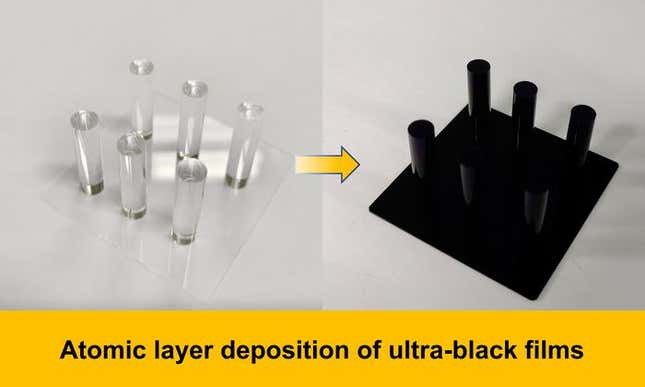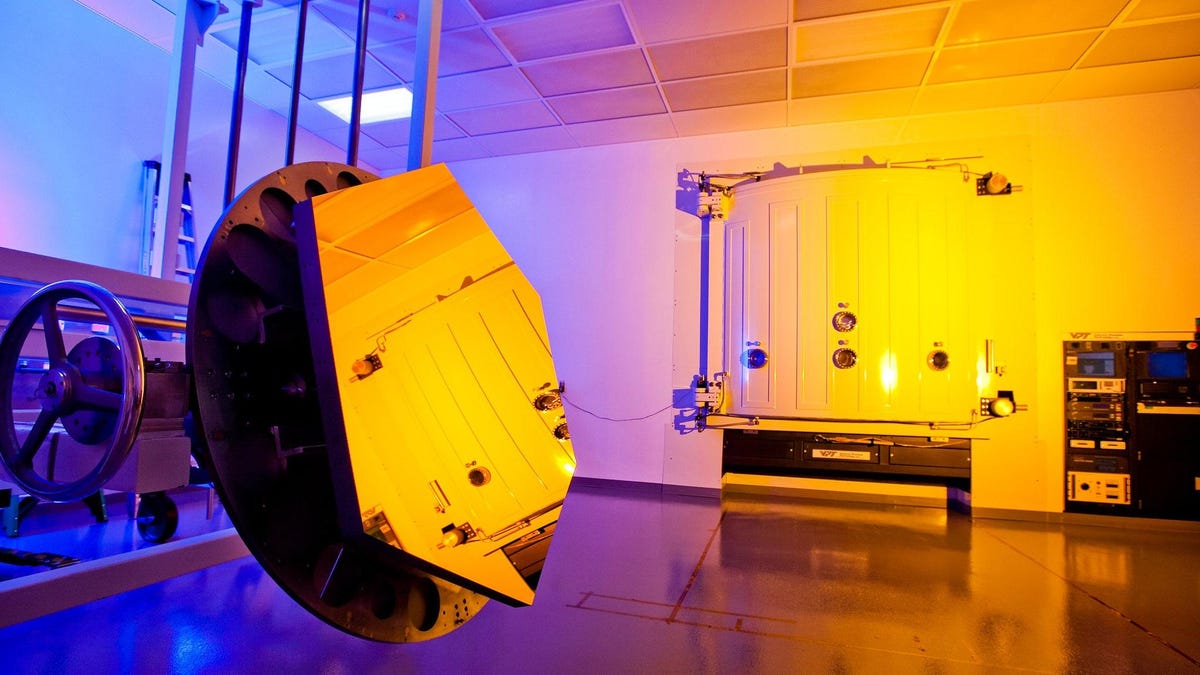It might be time for space telescopes to ditch their old coating for a more mysterious look, helping them blend in the dark void of space and capture better images of the cosmos.
A team of researchers from the University of Shanghai developed an ultrablack thin-film coating for magnesium alloys—the casting material that’s fabricated for telescopes and optical instruments—which they say absorbs nearly all light while still being durable enough to survive in the harsh environment of space.
As detailed in a recent study published in the Journal of Vacuum Science and Technology A, the researchers used a manufacturing technique known as “atomic layer deposition” whereby a target is placed in a vacuum chamber and exposed to specific types of gas.
To create the ultrablack coating, the team used alternating layers of aluminum-doped titanium carbide (TiAlC), which acts as an absorbing layer, and silicon nitride (SiO2), which is used to create an anti-reflection surface. When combined together, the pair prevent nearly all light from reflecting off of the coated surface. During tests, the ultrablack coating absorbed 99.3% of light across a wide range of wavelengths, according to the study.
Existing telescopes are covered in enhanced aluminum coatings, which reflect around 92 to 95% of light. That’s pretty close to reflecting nearly all light, but it’s still not quite there yet.

Black coating, on the other hand, is ideal for absorbing light. However, it is often too fragile to survive in space. “It is also difficult for many other coating methods to apply coatings inside a tube or on other complicated structures,” Yunzhen Cao, a professor at the Shanghai Institute of Ceramics, Chinese Academy of Sciences, and co-author of the new study, said in a statement.
With its manufacturing technique, the newly created ultrablack coating can be applied on complex surfaces such as cylinders, pillars, and trenches. “This is important for their application in optical devices as they often have significant curvature or intricate shapes,” Cao added. “What’s more, the film shows superb stability in adverse environments, and is tough enough to withstand friction, heat, damp conditions, and extreme temperature changes.”
The researchers are hoping to improve on the ultrablack coating, enhancing its light-absorption abilities even more so that it can improve the performance of space telescopes, and feed us even more mesmerizing images of the universe.
For more spaceflight in your life, follow us on X and bookmark Gizmodo’s dedicated Spaceflight page.

